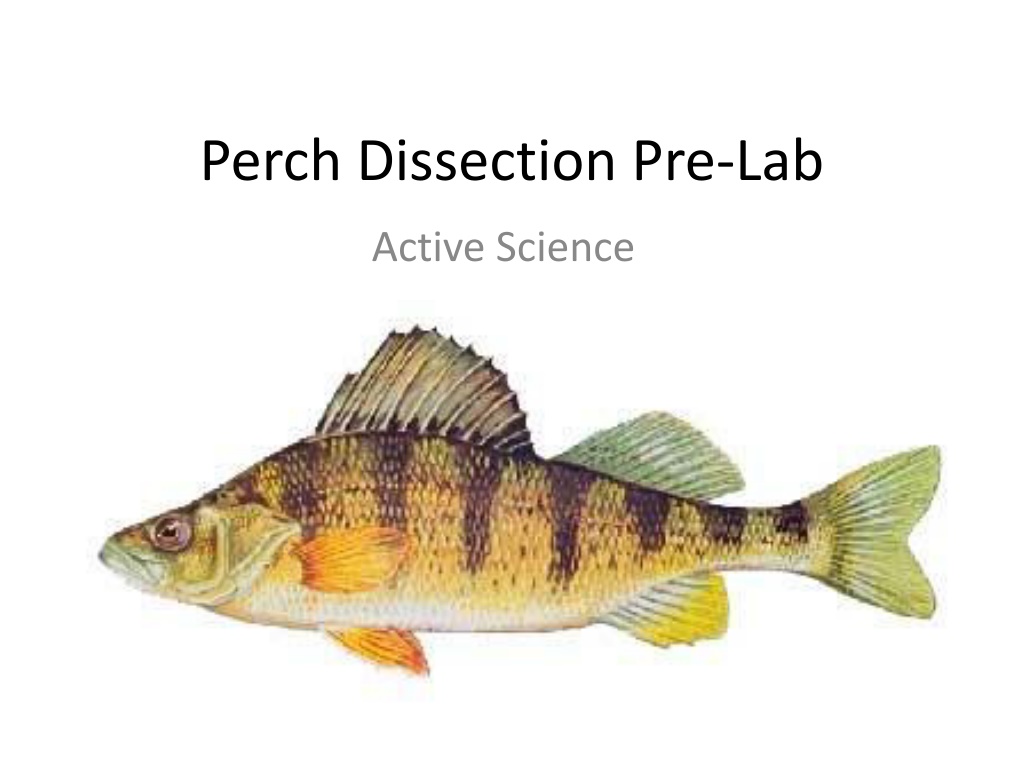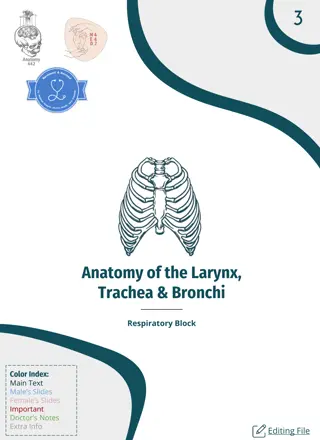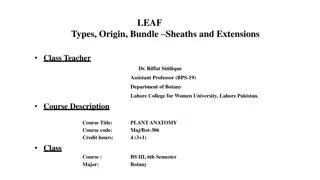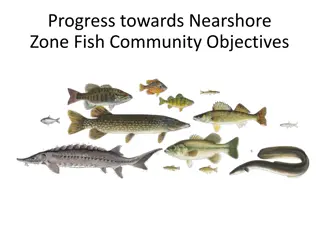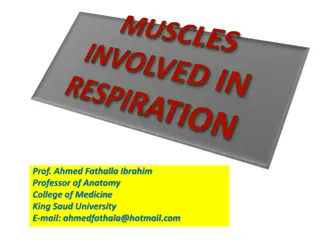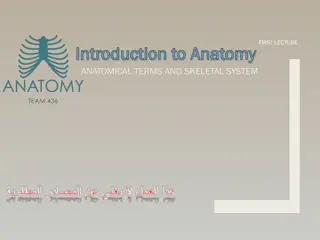Perch Anatomy and Classification
Discover the fascinating world of perch through detailed insights into their external and internal anatomy, classification in the animal kingdom, and interesting facts about the yellow perch species. Explore how gills work in respiration and learn essential dissection terms for a comprehensive understanding of this aquatic creature.
Download Presentation

Please find below an Image/Link to download the presentation.
The content on the website is provided AS IS for your information and personal use only. It may not be sold, licensed, or shared on other websites without obtaining consent from the author.If you encounter any issues during the download, it is possible that the publisher has removed the file from their server.
You are allowed to download the files provided on this website for personal or commercial use, subject to the condition that they are used lawfully. All files are the property of their respective owners.
The content on the website is provided AS IS for your information and personal use only. It may not be sold, licensed, or shared on other websites without obtaining consent from the author.
E N D
Presentation Transcript
Perch Dissection Pre-Lab Active Science
Dissection Terms Anterior: situated before or at the front of Posterior: situated behind or at the rear of Ventral: situated on or toward the lower, abdominal plane of the body; equivalent to the front, or anterior, in humans. Dorsal: situated on or toward the upper side of the body, equivalent to the back, or posterior, in humans. Caudal: of, at, or near the tail or the posterior end of the body.
Perch Classification in Domain Eukaryota Kingdom: Animalia Phylum: Chordata Subphylum: Vertebrata Infraphylum: Gnathostomata Superclass: Osteichthyes bony fish Class: Actinopterygii Order: Perciformes Family: Percidae Genus: Perca Species: Perca flavescens
Perch Facts Yellow perch (Perca flavescens) is a species of perch found in the U.S. and Canada in both fresh and salt water lakes primarily. Recognized by its dark vertical stripes and gold or yellow body color. Size: adults are usually between 4- 10 inches (10-25.5 cm) in length. Lifespan: up to 11 years Spawning occurs at the end of April or beginning of May, depositing 10,000 to 40,000 eggs upon weeds, or the branches of trees or shrubs that have become immersed in the water. After fertilization the eggs hatch in 11 to 27 days depending on temperature and other weather conditions. Diet: Adult perch dine primarily on immature insects, larger invertebrates, (crayfish, etc.) and the eggs and young of other fish, which they take both from open water and from the bottom.
Perch Anatomy terms Operculum: a bony flap of skin over their gills that protects the gills and which opens and closes to help bony fish breathe when they are not swimming. Swim (air) Bladder: a gas filled sac that helps keep bony fish buoyant! Gills: the organ by which gases are exchanged between the fish and the surrounding water. Lateral Line: The lateral line is a sense organ in aquatic organisms (chiefly fish), used to detect movement and vibration in the surrounding water.
How do Gills work in respiration? The gill works by providing a surface where the water (which has dissolved oxygen) comes into contact with the blood of the fish. The blood circulation within the gill is arranged in such a way that it flows in opposite direction to the flow of water (=countercurrent arrangement). Because oxygen will tend to flow (diffuse) from the site of highest concentration to the place of lowest concentration, this arrangement ensures that oxygen will always flow from the water into the blood.
Oxygen is not as abundant in water as it is in the air, so for aquatic animals, oxygen concentration is a major limiting factor. The best way to ensure that enough water is "scanned" for oxygen at the gills is providing a really large surface area for gas exchange. Thus, each gill is formed by filaments. Each filament has secondary lamellae that rise perpendicularly to the surface of the filament. The total surface area is extremely large with respect to the volume of the gills. Gas exchange occurs at the secondary lamellae, and it's here where you can see the countercurrent circulation.
How does the swim bladder help keep the fish buoyant? When gas is added to the swim bladder, the fish becomes less dense. When gas is removed from the swim bladder, the fish becomes more dense. A swim bladder is filled with air when the fish wants to ascend, and it is deflated when the fish wants to descend.
